For modern corporations, maintaining a secure and compliant IT infrastructure is an unavoidable duty. Setups for firewalls, which can be essential protection elements, have to follow industry requirements, legal frameworks, and company safety regulations. However, manually checking firewall rules and firewall compliance can be unsustainable, time-consuming, and at risk of mistakes, in particular as networks get bigger and greater complicated. Because of this, businesses are increasingly the use of automation to make this crucial technique extra efficient. Organizations like as Opinnate are providing IT administrators with the means to streamline audits, remove uncertainty, and improve overall security posture through the Firewall Compliance.
Firewall Compliance’s Growing Significance
In a world wherein records safety guidelines are becoming greater stringent and attacks have become extra common, maintaining firewall compliance is now a continuous necessity. Companies should restrict get right of entry to to important systems and display measures over their security features with a purpose to comply with regulations like PCI DSS, HIPAA, GDPR, and SOX. Violations may result in excessive fines; harm to at least one’s reputation, and interruptions to enterprise operations.
Manual Firewall Auditing’s Difficulties
In the past, IT teams have conducted firewall audits using spreadsheets, command-line outputs, and manual rule inspections. These methods are ineffective and improper for business enterprise-scale networks, despite the fact that they might perform nicely in smaller settings. Thousands of policies may be discovered in firewalls, a lot of that is out-of-date or poorly documented. Manually sorting thru those rules increases the opportunity of human mistake, redundancy, and oversight.
The dynamic nature of enterprise networks presents another difficulty. Firewall configurations might vary often due to the emergence of hybrid cloud systems, the necessity for remote access, and changing business requirements. Maintaining reliable, current audit trails through manual methods is practically difficult due to this continual change.
Automation’s Advantages for Compliance Audits
For IT managers, automating firewall audits has many benefits. Above all, it drastically cuts down on the time and effort needed to examine setups and provide compliance reports. Real-time firewall rule scanning, anomaly detection, and flagging of internal or external policy violations are all possible using automated tools. This facilitates the transition of security teams from a reactive to a proactive strategy. Automation also guarantees uniformity. By comparing rules to established baselines and compliance standards, the subjective interpretation that frequently marred manual audits is removed.
The Vital Features of Automation Tools for Firewall Compliance
Features specifically designed for thorough audits and policy management are included in contemporary firewall compliance software. Rule analysis engines, which can identify unused, shadowed, or conflicting rules, are frequently included in these products. IT teams can improve security and firewall performance by locating these inefficiencies.
Organizations can align firewall regulations with certain standards, together with NIST, ISO 27001, or CIS guidelines, way to the majority of structures’ help for configurable compliance frameworks. In order to present a comprehensive image of the enterprise’s security posture, in addition they integrate with SIEM structures, vulnerability scanners, and configuration control databases.
Another strong suit is reporting. Technical teams, auditors, and executives can all receive comprehensive reports from automated technologies that include pertinent metrics and useful insights. Without requiring manual involvement, scheduled reports and notifications guarantee that stakeholders are informed.
Techniques for Successful Automation Implementation
IT managers must take a strategic approach to automation installation if they want it to provide value. Setting up explicit audit policies and rule baselines is the first step. These baselines ought to take into account risk tolerance, legal requirements, and organizational security objectives. Automated programs can regularly check firewall rules for deviations after baselines have been established.
Another crucial tactic is policy normalization. To guarantee uniform policy enforcement in settings with several firewall suppliers, it’s critical to unify rules across platforms. Cross-platform compatibility is a feature of many automation technologies that enables centralized control of diverse settings.
Monitoring changes is also crucial. A rigorous protocol should be followed to log, review, and approve any changes made to firewall rules. Change control procedures can be enforced by automation technologies, guaranteeing that no policy modifications are overlooked or rejected. This helps with regulatory compliance in addition to improving security.
Finally, IT managers ought to plan frequent testing and simulations. Proposed regulation changes can be simulated using automated platforms to estimate their effects prior to implementation. By doing this, configuration errors that can impair company operations or create new vulnerabilities are prevented.
Getting Past Typical Implementation Obstacles
Adopting automation has drawbacks despite its advantages. Lack of qualified staff, old systems, and resistance to change can all impede advancement. IT managers should begin with prototype initiatives that show immediate results in order to get beyond these obstacles. These can involve concentrating on particular compliance standards or auditing a small number of firewalls.
Change management and training are also essential. Teams must comprehend the new tools’ capabilities and how they complement current processes. Network, security, and compliance teams working together will guarantee a more seamless transition and improved alignment with corporate goals.
Conclusion
Automating Firewall Compliance checks is becoming more and more necessary as company networks grow more sophisticated and cybersecurity laws become stricter. The security and compliance requirements of today simply cannot be handled by manual means. IT administrators may guarantee ongoing compliance, lessen audit fatigue, and create a more robust security framework by utilizing cutting-edge tools and tried-and-true methods. Businesses like Opinnate are leading this change by enabling businesses to abandon conventional methods and adopt automation for increased efficiency, dependability, and comfort.











